If you’ve been looking for a puppy for a while, then you’ve probably heard about the puppy-proof home. But, what exactly does it mean, and how do you get one? In this blog, we’ll explore what makes a puppy-friendly home and what you need to do to make sure your home is safe for your puppy.
Puppies love to explore, and because dogs experience the world using their mouths to feel everything, it is very easy for them to get into trouble. Puppies will gnaw and chew on almost anything they can get their paws on. You need to be sure there is nothing that will cause them harm. You can take out puppy insurance for maximum protection. This will lower your vet bills if your puppy gets into an accident.
The Puppy Proof Home
Just like human babies, puppies can get into all sorts of mischief in a regular house. Your new puppy could chew on power cords or go places they are not supposed to, such as under the house or behind the fridge. Puppy proofing your home is the best way to ensure they remain happy and healthy.
After you’ve fixed any problematic areas of your home, you can confidently say that your puppy is living in the puppy-proof home of its dreams! Many breeders will ask if you’ve completed puppy-proofing your house, and they may ask for details about what you’ve done. The questions they ask are to ensure their puppies are going to safe homes and that you are a hundred per cent ready to have a puppy.
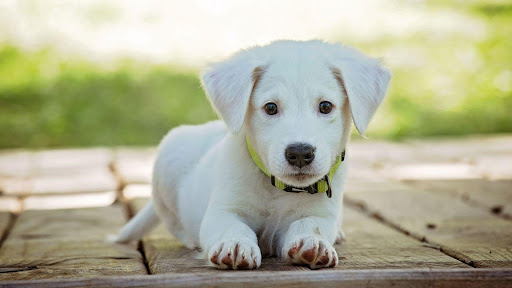
Puppy Proofing
People get a new puppy and are so excited they forget about puppy proofing. Puppies are great fun, and you can revel in their cuteness. Start an Instagram account dedicated to their antics. However, without a puppy-proof home, you’ll find quick trips to the vet are more common than you’d hope.
Learning how to puppy-proof your home is a part of being a good puppy parent. Ideally, it is best to start before you get your puppy, but if you’ve already got it at home, then there’s no time like the present. You can follow this guide to get you started. After reading through these items, you’ll have a reasonably good idea about what items you need to watch out for in your home.
Keeping People Food Away
Puppies love to smell things, and they’ll taste almost anything as a way of exploring their space. However, many food items are less than ideal for your puppy; some can even be fatal! Human foods are delicious to our taste; many can see your puppy in the local vet hospitals. Foods such as chocolate, avocadoes, and onions are poisonous to your puppy!
Reading about what human foods suit your puppy is a good idea. But until you familiarise yourself, it is best to ensure all people’s food is securely locked away or out of reach.
Curtains Cords
Most modern curtains will include cords that will not cause an issue for your puppy. They are modified, so children do not get tangled. But, if you live on an older property, you’ll need to ensure the cords are safely tucked out of the way or removed altogether.
If you own your home, you can modify the curtain cords yourself. If you’re renting a property, then you may need to request the curtain cords be modified. Fixing curtain cords to make them safe for children is essential and should be a fast-tracked repair. It may be possible to order a curtain cord safety kit, depending on your state.
Choking Hazards
People with children already understand how small things can become big problems, and this issue is only magnified when you have a puppy that’ll put anything in their mouths! Look for anything your puppy could potentially get at, then place it in a secure location.
Possible hazards for your pets include small toys, loose change, cotton balls, small towels, toilet paper rolls, and tissue boxes. Choking hazards can also include old dog toys. When you have a dog toy that is starting to lose parts or tear, it is best to replace them and buy some new ones. Always remember a destroyed dog toy is a dog toy enjoyed!
Electrical Wiring
All the power cords around your home need to be secured. Cords on the ground can be a potential chewing hazard for your puppy. Ensure all loose cords are safely tucked away or securely attached to another item. If possible, move your powered items to wall sockets either behind furniture or higher on the wall.
Breakable Items
If you have any precious items that can be knocked over and broken, these should be put on a high shelf or packed away. You should also check for any furniture that is not entirely stable, including bookcases and side tables. Puppies can grow very fast, and if you have a large dog breed, you could easily have a 30kg dog bouncing around your home!
Toxic Plants
Many household plants are very toxic to dogs if they choose to take a bite out of them. If you have indoor plants, you’ll need to check to see if these are suitable to be around pets. In addition to indoor plants, check out what is growing in your backyard and what type of plants you may encounter during walks.
Dangerous Products
You’ll be surprised where puppies can explore, including opening low cabinets for a quick sniff. If you have hazardous chemicals such as cleaning products, then placing them on higher-up shelves is best to keep them away from curious puppies.
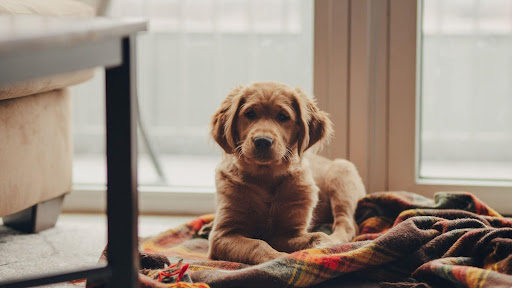
How To Puppy Proof Your Home
The first stage of how to puppy-proof your home is to give all the floors a complete sweep and clean. Cleaning the floors will help remove any small items (dust bunnies, etc.) that can get clogged in your puppy’s nostrils. Puppies love to sniff everything, and minute particles can get lodged in their sensitive noses; sweeping and vacuuming the floor will remove all of these items and make your home safer.
The next stage is to go through each room and take care of anything that could be considered a hazard. As your puppy is small, you may like to get on all fours and try to see the world from their angle. Doing this may feel funny, but it is a good exercise and will give you a unique perspective on how your puppy sees the world.
Here are some key things you need to look out for in each room.
Living Areas
The living area of most homes is where your puppy will spend a lot of its time. Your puppy will sit next to you and watch television; you may even keep their crate in this room. As most living areas have electronic equipment, this is where you’ll find plenty of electrical cords, ensure these are all kept out of reach for your puppy. You can attach all the cords in areas such as behind the television. Anything you don’t want chewed (or slobbered on!) should be carefully packed away and placed out of your puppy’s reach.
If your puppy likes to chew on items, you can give them special chew toys. Puppies will go through a teething stage and may look for things to chew on. If they have something they are allowed to chew, they’ll less likely choose something that is not a great idea, such as your television remote control!
Kitchens
Kitchens are a host of fascinating smells for a puppy. Your puppy will have a wonderful time in the kitchen, discovering all the sights and smells of your kitchen. Unfortunately, the kitchen is also where they can get into a lot of trouble.
If you keep cleaning products in the lower cabinets, you can place child locks on these doors to stop your puppy from getting in or remove these items to higher spaces. You’d be surprised at what a motivated puppy can get into!
The garbage bins are also an interesting source of smells for a puppy. They can get into these and chew on potentially toxic food items. Place the garbage bin on the countertops or into a locked cupboard.
Bedrooms
Bedrooms are often filled with items your puppy should not be chewing on. You’ll find that puppies love to play in clothes and other items with your scent. If you leave your puppy alone, they may look for comfort in things that smell like you. Ensure that nothing is left on the floor and close doors to places such as ensuites and wardrobes. If you can’t close off parts of the bedroom, then it is best to keep the door to your room closed when you’re not in the room.
Laundry
Many puppy owners will make the laundry into the puppy’s room. Laundries are usually tiled, making them easy to clean when a puppy has a little accident! However, laundries often contain all sorts of chemicals and things that your puppy should not be touching. Ensure all chemicals are placed high up and out of reach.
As your puppy grows, they may be able to jump up onto the countertop, so it is best to use child locks on lower cabinets or place items on high shelves and cabinets. You may use a tub or box with a secure lid if you don’t have high spaces available.
Bathrooms
Bathrooms can contain all sorts of hazards for your puppy. Even small pools of water can be a possible drowning hazard for puppies. It would help if you always kept the toilet’s lid down, and you may even consider getting a child lock to keep it in place. Dogs often drink from the toilet as the porcelain bowl keeps the water cool, and dogs love cold water!
Other bathroom hazards are small objects that can cause choking or internal obstructions. Ensure you keep all items secured in draws and tubs with tight lids. Items like razors and hair ties are almost irresistible for puppies, so ensure these are all kept off the floor.
Backyard
In the backyard, you must ensure that all escape routes are sealed. Check along with your fence and look for any missing or loose panels. You’ll need to fix these before your puppy can be left alone in the backyard.
Other hazards in the backyard include the plant you have, if your puppy can get under your home, and if the gates are tall enough. Dogs can dig under and jump over fences, so you must ensure these are appropriately secured. Puppies are very good at squeezing through the gaps in old fences; this can cause them to get stuck or escape your backyard!
If you have any gardening chemicals (snail bait, etc.) or fertilisers, you must ensure these are secured and not kept within easy reach for your puppy.
Introducing other pets to your puppy
Other pets can be a problem for your new puppy. Older pets may not want to share their home with a new and younger animal. If you have other cats or dogs, then you need to be careful in how they are introduced. Cats usually consider the entire home theirs, and they can lash out at a young puppy if they encroach on their spaces. Older dogs may be more accepting, but they can get quickly exhausted when dealing with the demands of an energetic puppy. If your older dog has a crate, they may wish to use that and avoid the puppy at certain times of the day. This behaviour is normal, and your pets will adjust over a few weeks.
When you introduce your pets, it is best to keep them contained or restrained so you can stop any misbehaving. You can place a cat in a travel box, and dogs can be placed on leads. Allow them some time to get used to each other’s smells, and do not leave them alone until after about a week.

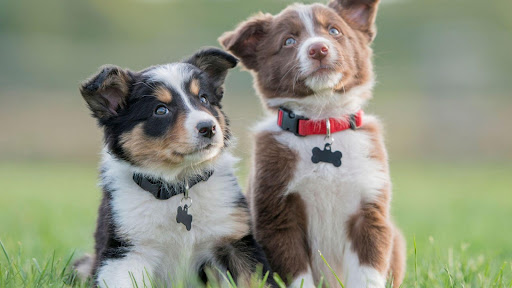
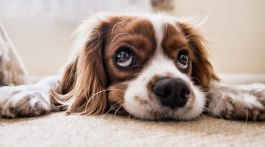
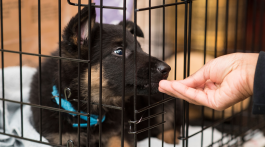
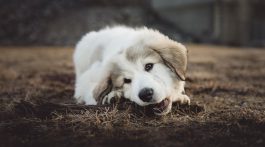
No Comment